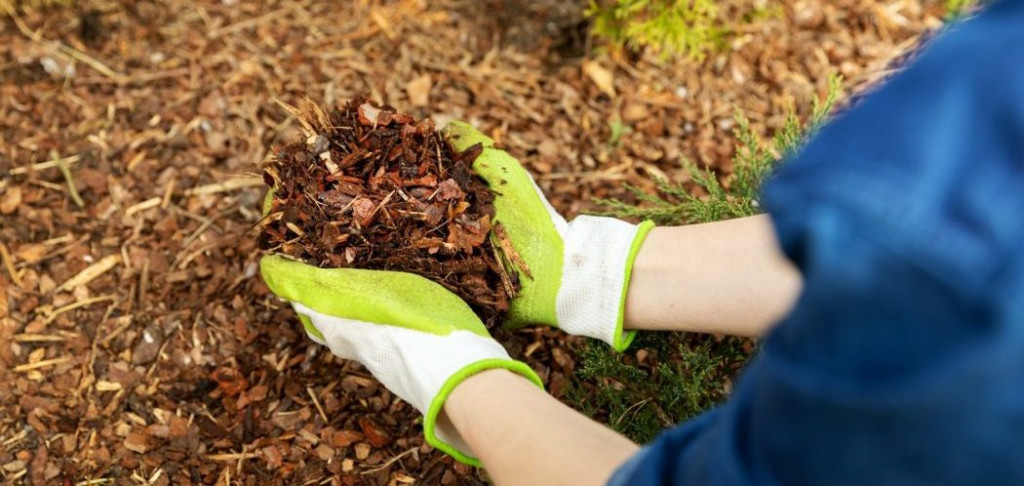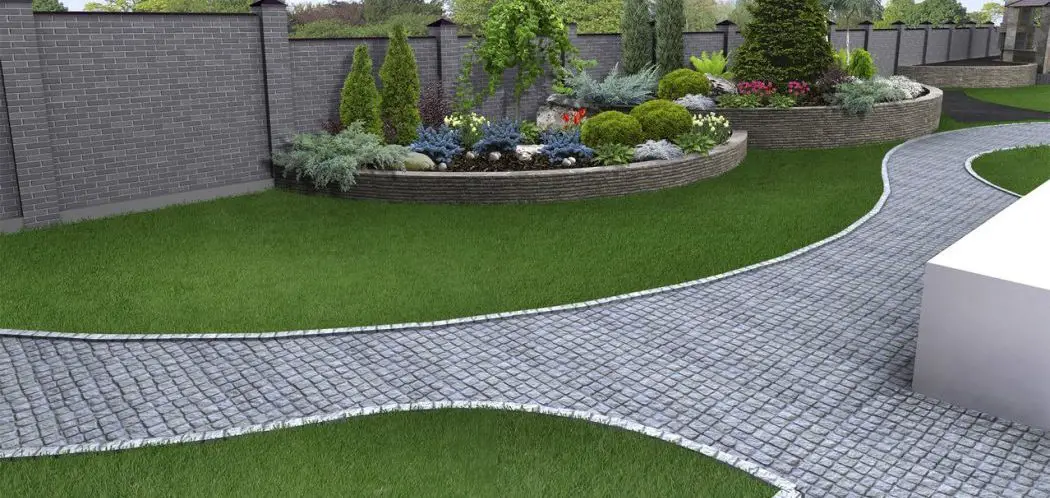A healthy lawn involves more than just watering it, keeping it fertilized, and making sure it stays green.
There’s one thing that will make your home go from a creepy haunted house vibe, to one that’s a bit more inviting – a well-cut lawn and that includes the edges.
Why Should You Edge Your Lawn?
Keeping your walkways free of stray grass is just as important as all other aspects of a healthy lawn. While many people are good about mowing their lawns, they often miss spots such as the edge of the lawn, which require just as much maintenance.
Trimming the edges of your lawn gives it that final touch so we’ve written this guide to help you keep your lawn edges neat and tidy.
Before you begin
Before you begin, the most important thing you are going to want to do is make sure your lawn is mowed.
The ideal length is between two to two-and-a-half inches.
By mowing the lawn first, you can edge at a much more consistent height.
From there, you can begin to edge your lawns using a trimmer. A trimmer is better than a lawn mower in this case because it can get those hard to reach areas that a lawn mower can’t. Be sure to snip parts of your lawn that aren’t uniform with the rest of the lawn so the grass looks neater.
Choosing the Right Tools
After getting your lawn mowed to a proper length, you want to make sure you have the proper tools to get the job done.
You may want to keep in mind that there’s a difference between a tool that can edge your lawn, and one that is simply used for trimming it.
The difference is that with edging, there will be a border made between your grass and the sidewalk. A trimmer, however, will just cut down the grass, but not shape it.

Create a Plan
Once you’ve got the proper tools, you can start mapping out how you want your lawn to look.
You definitely want to do this before you begin.
You should also consider any hills or other difficult areas of lawn. It’s important to know ahead of time how you plan on shaping these particular areas.
A good tip would be to mark your edges with string before you start, that way you have some sort of diagram to follow.
This way, you can keep playing around with the design until you are satisfied.
Once you’ve completed the work, it will be much harder to change.
Getting Down and Dirty
Once you have the outline done of your grass, you are going to want to start digging up the turf.
This is where things can get messy.
You can get a professional to do it, but you can easily learn to do it yourself, especially if you are cutting your edges at a 90 degree angle.
Honing the edges
Once you have done that, you want to make sure you are honing the edges. Get rid of any blades of grass that may be sticking out with shears or with your own hands. You can also do this long after you have created your edge, as a form of upkeep.
Adding Mulch
You may also want to consider adding mulch around your edges. This will prevent the growth of weeds while also adding a darker color to the edge of your bed, thus distinguishing it from other parts of your lawn.

Have a Consistent Maintenance Plan
Even after you’ve finished edging and creating the shape you want with your grass, it’s important to keep up with it.
The amount of time that you will need to mow or trim your lawn all depends on the type of grass you are growing and the time of year that it is.
Of course, the longer you let your grass grow, the harder it will be to keep it in the shape you want it. That’s why it’s important to be diligent about how often you cut and edge your lawn. Make sure that once you see a shrub of grass that is growing unruly, you trim it down.
Weeds
Another maintenance issue people don’t consider is weeds. No matter where you live and how much you take care of your grass, weeds are bound to grow. The good thing about keeping your lawn edged up is that it can be easy to spot weeds.
Once you do, be sure to pick them or treat them with a weed killer. The sooner you treat them, the easier they will be to get rid of.
Make sure that once you are done clearing the area, you clean up all the grass clippings that are leftover.
If you have plants or shrubs that are growing into your designated area, you may want to consider transplanting them. This is a better alternative to simply cutting them down, and will still give you the desired look you want.
Edging a Garden
Many people find that they haven’t always been dealt the ideal garden space.
If you are starting from scratch, you’re going to want to create a clean border and edges to make a tidy garden bed.
Before you start cutting your edges, it’s important to lay out a plot with a garden hose or anything else you may have available. This way, you’re making sure you stay within the guideline that you have created.
In doing this, you can also get a sneak peek of what your future garden may look like. If it isn’t what you had in mind, you can always rearrange it without having made any permanent damage to it.
Once you’ve done this, you can take a garden tool such as a spade or a hoe to dig up the lawn. There are also electric tools you can use if you don’t want to do this manually. An electric tool does have its benefits, such as saving you time and giving you much cleaner edges than if you were to do it manually.
Make sure that as you are digging up your new garden bed, you are also creating a “trench” around it. Be sure to dig up around four to six inches of soil so that you can fill it with compost or manure without worrying about getting it into the rest of your lawn.
Another benefit of having a trench around your garden bed is that it will promote proper water drainage so that your plants or vegetables don’t drown.
Laying Out Your Edges
Once you’ve got your lawn or garden in the shape that you want it, you can start to think about the type of material you want to surround it. Many people go the brick or stonework route, which although aesthetically pleasing, can also be fairly expensive.
If you are set on this design, however, you can opt for prefabricated stone designs that would look just as nice.
Wooden edges
On the other hand, if you are looking to be more cost-effective, you can always go the wood route. These fit best on edges that are entirely straight all around, and aren’t fitted around any hills or curves.
Wooden edges are easy to put in on your own and do just as good of a job at keeping your garden contained as any other material would.
Strip edging
Another alternative would be to use strip edging. You can choose anything from plastic, vinyl, metal, or rubber. If you do choose this material, just be aware that if you aren’t careful mowing your lawn, your lawn mower could easily tear this material up.
Alternatives
If you’re a little bit more on the DIY side of things, you can always use regular household items to fill your edges. Many people choose items such as recycled glass bottles and rocks to fill in the edges. Although not as neat as the other alternatives, it creates a unique look in your garden that is sure to be admired.
For people who aren’t good about maintaining their lawn, a good alternative would be to use spiked metal sheeting. This type of sheeting is fixed into the outline of your garden bed and helps it keep the shape no matter how much it grows. This will also make sure that your lawn doesn’t grow into the rest of your garden bed.
In Summary
As you can see, edging your lawn isn’t exactly rocket science, but it does take a lot of care and attention. Many people find that it creates an added touch to their lawns that they hadn’t thought about before.
If there’s one thing to keep in mind, it’s to make sure your edges are laid out accordingly, and that you are maintaining upkeep with your lawn. Otherwise, it will start to overgrow, and you will have to repeat the process all over again.

